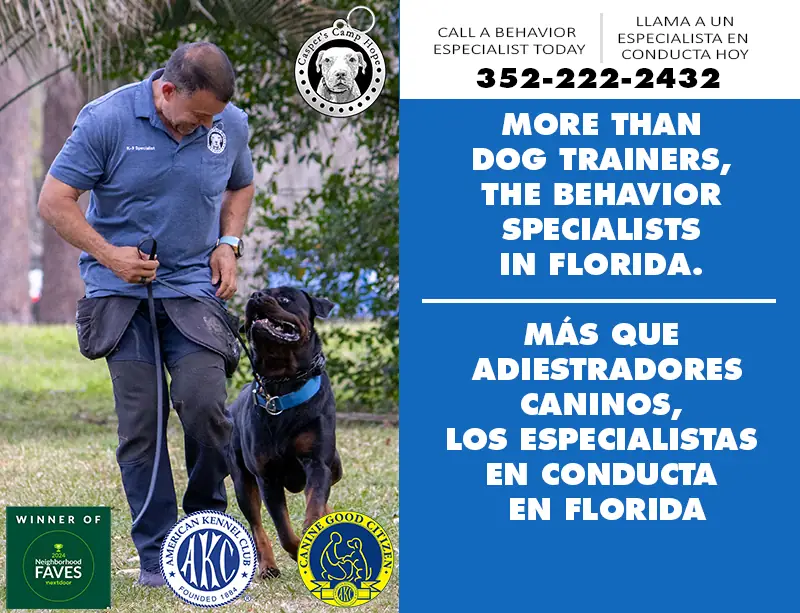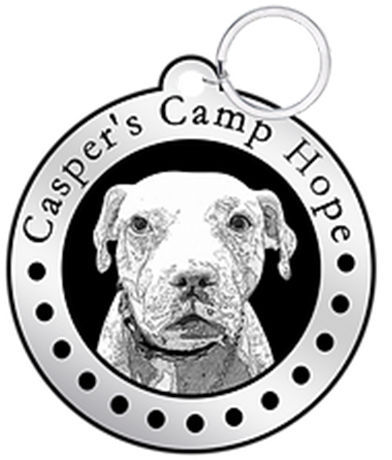
Selecting the ideal boarding option is crucial for your dog’s comfort, stress levels, and overall happiness. This guide offers a thorough comparison of home dog boarding versus traditional kennels, detailing each approach, highlighting their advantages, outlining potential downsides, and providing practical advice on cost, safety, flexibility, and suitability for different dog personalities. You’ll learn how personalized, cage-free environments can significantly reduce anxiety, why kennel facilities might still be a good fit for some pets, what key questions to ask before booking, and how Casper’s Camp Hope’s distinctive home boarding services elevate your dog’s experience. By diving into this guide, you’ll gain valuable insights to make the best dog boarding choice and discover the exceptional cage-free pet care offered at Casper’s Camp Hope.
What Is Home Dog Boarding and How Does It Differ from Traditional Kennels?
Home dog boarding is a personalized in-home pet care service that provides dedicated attention and a cage-free environment within a private residence. This approach enhances a dog’s comfort and minimizes stress by maintaining familiar routines and offering consistent human interaction. For instance, dogs in home boarding spend their days engaging with caregivers in living spaces rather than being confined to runs. Understanding this connection between environment and a dog’s well-being is fundamental to comparing it with conventional boarding facilities.
What Defines Home Dog Boarding and Its Cage-Free Environment?
Home dog boarding is characterized by providing lodging, engaging activities, and attentive supervision within a residential setting, where dogs are free to move about under the watchful eye of their caregiver. This model prioritizes canine welfare by eliminating crate confinement, preserving daily routines, and encouraging natural behaviors like play and exploration in safe, home-like spaces. For example, a social dog can relax on the sofa, follow household schedules, and participate in family activities, which fosters a strong sense of emotional security and ensures ample physical exercise.
Dogs benefit from consistent feeding schedules, gentle handling, and one-on-one play sessions that closely mirror their life at home, making cage-free boarding an excellent choice for pets prone to separation anxiety, those sensitive to confinement, or dogs uncomfortable in noisy group settings. The seamless transition from familiar home cues to calm, individualized care truly sets home boarding apart from facility-based options.
What Are Traditional Kennels and Their Typical Features?
Traditional kennels are commercial boarding facilities designed with individual runs or crates, communal play areas, and designated exercise zones, all managed by professionals trained in basic animal care. These establishments focus on maintaining safety, cleanliness, and standardized routines for multiple dogs, utilizing enclosed outdoor yards, set feeding schedules, and limited socialization periods. Many kennels implement robust protocols such as climate control, secure fencing, and established partnerships with emergency veterinary services.
For example, a kennel might house twenty dogs in adjacent runs, rotating them through supervised outdoor time and group play sessions. While this ensures regulated care and hygiene, it can also introduce stress due to ambient noise, a high density of dogs, and confinement.
Research indicates that the physical, social, and sensory aspects of a kennel environment can significantly influence a dog's overall well-being.
Kennel Environment's Impact on Canine Welfare: A Critical Review
Dogs can be held temporarily or permanently in kennels for a number ofreasons, notnecessarily for their own benefit. Although restrictive environments have been associated with poor welfare, priorities for research and change cannot be understood unless the various aspects of the kennel environment are appreciated separately. This review critically evaluates the experimental research regarding the physical, social, sensory, occupational, nutritional and psychological aspects of the kennel environment and their effects on canine welfare, with a view to providing a consolidated report on our current state of knowledge on this subject.
The effect of the kennel environment on canine welfare: a critical review of experimental studies, DS Mills, 2007
How Do Home Boarding and Kennels Differ in Care and Environment?
Home dog boarding offers personalized, continuous attention within a tranquil, residential atmosphere, whereas kennels provide structured, facility-based supervision with scheduled group interactions and periods of rest in crates. In-home services help reduce stress hormones by maintaining familiar routines and consistent human companionship, while kennels emphasize standardized care with strict cleaning schedules and regulated group play. Dogs in home boarding enjoy freedom of movement and emotional continuity; kennel guests typically follow regimented schedules and experience temporary confinement, which can trigger anxiety or overstimulation in more sensitive animals.
What Are the Key Benefits of Home Dog Boarding Compared to Kennels?

Home dog boarding significantly enhances your dog’s well-being by combining personalized care, the freedom of a cage-free environment, improved socialization opportunities, and the maintenance of familiar routines within a residential setting. As pet owners increasingly seek more natural and stress-reducing boarding solutions, home-based services offer experiences that often surpass kennel standards in terms of emotional comfort, quality of supervision, and behavioral support.
Before we delve into the specific benefits, it’s helpful to understand how these advantages directly contribute to a dog’s welfare and provide owners with greater peace of mind.
- Personalized attention ensures each dog’s unique needs are met through customized feeding, gentle handling, and dedicated one-on-one play sessions.
- A cage-free environment allows dogs to move freely, explore different areas of the home, and maintain their regular walking, sleeping, and feeding schedules.
- Supervised socialization within a home setting fosters safe, balanced interactions with other dogs under the constant oversight of a dedicated caregiver.
- Maintaining familiar routines closely replicates the dog’s everyday life, effectively minimizing separation anxiety and promoting emotional stability.
Collectively, these benefits cultivate a happier, healthier boarding experience that aligns with your dog’s natural behaviors and mitigates the common stressors associated with kennel stays.
What Are the Common Drawbacks and Considerations of Traditional Kennels?

Traditional kennels provide structured care and professional oversight but can introduce stress through noise, confinement, and limited individualized attention. Pet owners should carefully consider these factors alongside cost, availability, and their dog’s specific temperament to determine if facility-based boarding is the right choice for their pet.
How Can Noise and Cages Increase Stress in Kennel Boarding?
Kennel boarding environments often expose dogs to continuous barking, echoing sounds within the facility, and the noise from adjacent crates, all of which can elevate cortisol levels and trigger anxiety. Confinement in metal crates or runs restricts natural movement, leading to frustration and restlessness. For example, a dog accustomed to a quiet home may exhibit pacing and vocal distress in a kennel run during periods of enforced isolation.
What Are the Risks of Limited Individual Attention in Kennels?
Kennels typically divide caregiver attention among numerous dogs, resulting in brief socialization windows and standardized care tasks. This group-focused approach can sometimes overlook individual health cues, specific dietary needs, or unique emotional requirements. A senior dog needing frequent bathroom breaks or particularly gentle handling might receive minimal one-on-one time, increasing the likelihood of accidents, discomfort, or unaddressed anxiety.
How Does Exposure to Illness Affect Dogs in Traditional Kennels?
The close proximity of multiple dogs in communal spaces significantly raises the risk of infectious disease transmission, such as kennel cough or gastrointestinal pathogens. Even with stringent sanitation protocols, airborne droplets and shared play areas can facilitate outbreaks. A healthy dog might contract kennel cough from an asymptomatic carrier housed nearby, underscoring the importance of vaccination requirements and robust biosecurity measures.
When Might a Traditional Kennel Be the Right Choice?
Kennel boarding can be a suitable option when dogs require strict supervision, medically monitored care, or immediate access to veterinary services, particularly in high-capacity emergency facilities. Dogs who genuinely thrive on structured playgroups, adhere to formal obedience training routines, or remain unfazed by confinement often adapt well to kennel environments. For instance, highly social dogs with robust health and minimal anxiety can benefit from safe group interactions and professional oversight in a kennel setting.
How Does Home Dog Boarding Compare to Kennels in Cost, Safety, and Flexibility?
Home dog boarding typically involves a higher nightly rate but offers enhanced safety, personalized supervision, and more adaptable scheduling, whereas kennel boarding generally provides lower rates, standardized safety protocols, and fixed drop-off and pick-up times. Evaluating the trade-offs across financial investment, security measures, and service flexibility is key for pet owners to choose the best value for their dog’s well-being.
Below is a detailed comparison table of key service aspects.
| Service Aspect | Home Dog Boarding | Traditional Kennels |
|---|---|---|
| Nightly Rate | Higher investment for dedicated one-on-one care | More economical per dog within a multi-dog pricing structure |
| Supervision | Constant personal oversight within a home environment | Scheduled check-ins and defined group play periods |
| Environment Safety | Secure residential setting with a limited number of dogs | Commercial facility with security fencing and surveillance systems |
| Scheduling Flexibility | Drop-off and pick-up times can be tailored to owner needs | Fixed operating hours and limited availability during holidays |
| Stress Minimization | Cage-free freedom helps reduce anxiety indicators | Crate rest and group noise can potentially increase stress levels |
Which Dog Personalities and Needs Are Best Suited for Home Boarding or Kennels?
The choice between home boarding and kennels largely depends on your dog’s age, anxiety levels, and social preferences. Matching personality traits with the appropriate service environment is essential for ensuring a positive boarding experience.
How Does Home Boarding Benefit Anxious or Senior Dogs?
Home dog boarding is particularly beneficial for anxious or senior dogs, as it provides a low-stimulus environment, consistent routines, and dedicated one-on-one attention that significantly reduces stress and supports mobility. For example, a senior dog with arthritis can receive frequent bathroom breaks and gentle handling, while an anxious pet can remain in a familiar home setting, avoiding the kennel noise that might exacerbate their fear responses.
When Is Kennel Boarding More Suitable for Highly Social or Active Dogs?
Kennel boarding can be advantageous for highly social or active dogs that thrive on group play, structured exercise rotations, and supervision by experienced staff. Dogs accustomed to energetic dog-park interactions often enjoy spacious yards and scheduled playgroups, which effectively satisfy their high energy needs and reinforce their social skills.
How Can Owners Assess Their Dog’s Temperament for Boarding Decisions?
Owners can assess their dog’s temperament by observing their reactions to new environments, their behavior when separated from primary caregivers, and their interactions with other pets. Conducting trial daycare visits, closely monitoring stress indicators like pacing or excessive vocalization, and consulting with professional trainers or veterinarians can help determine whether a dog would benefit more from the calm of home boarding or flourish in a kennel’s activity-rich routines.
What Questions Should Pet Owners Ask When Choosing Between Home Boarding and Kennels?
Pet owners should prepare specific questions to thoroughly evaluate the safety, health protocols, and caregiving standards of any boarding service before making a booking. Asking the right questions ensures you can make an informed decision that prioritizes your dog’s well-being.
What Are Essential Safety and Health Questions for Boarding Providers?
Pet owners should confirm the provider’s insurance coverage, vaccination requirements, emergency veterinary partnerships, and sanitation procedures. For instance, inquire about the frequency of bedding changes, the types of disinfectants used, and which veterinarians handle on-site emergencies. Understanding these protocols is crucial for ensuring your dog remains protected from potential injury and illness.
How to Evaluate Personalized Care and Environment Before Booking?
Prospective clients should request a tour of the facilities or homes, observe the dog-to-caregiver ratios, and review the daily routines. It’s important to ask about feeding schedules, available exercise options, and the approach to socialization. Witnessing a live interaction can reveal whether the environment truly supports cage-free freedom, individualized play, and consistent human engagement.
What Should Owners Know About Daily Routines and Socialization Practices?
Owners should request a sample schedule that details meal times, outdoor breaks, rest periods, and play sessions. It’s also important to clarify how providers introduce new dogs, manage group interactions, and handle any behavioral issues that may arise. A transparent outline of the daily routine helps owners anticipate their dog’s experience and assess its compatibility with either a home or kennel setting.
Research suggests that providing enrichment toys can be a highly effective method for reducing stress-related behaviors observed in dogs during boarding.
Enrichment Toys Reduce Stress Behaviors in Boarding Dogs
Stress is something felt by all creatures in many different situations. For dogs, stress can come about by being in an unknown environment, near unfamiliar people and other dogs. When dogs are stressed, they exhibit behaviors that can fall into four different categories: posture, vocalizations, activity, and aggression. This research was looking to see if the use of enrichment toys, meant to stimulate a dog’s mind, could be a useful tool in combating behaviors caused by stress.
Effect of Enrichment Toys on the Behavioral Signs of Stress in Boarding Dogs, 2022
How Does Casper’s Camp Hope Provide Unique Benefits in Home Dog Boarding?
Casper’s Camp Hope specializes in cage-free home boarding services that seamlessly integrate personalized care, stress-minimizing environments, and continuous caregiver supervision. This provider ensures that every dog enjoys familiar routines, engaging enrichment activities, and dedicated one-on-one attention within a secure and comforting residential setting.
What Personalized Care Services Does Casper’s Camp Hope Offer?
Casper’s Camp Hope provides customized feeding plans, engaging enrichment games, and individualized exercise regimens tailored to each dog’s specific age, health status, and temperament. Our dedicated caregivers meticulously document daily progress and adjust activities as needed to accommodate mobility limitations, dietary restrictions, or social preferences, ensuring comprehensive well-being.
How Does Casper’s Camp Hope Ensure a Cage-Free, Stress-Reducing Environment?
By carefully limiting the number of dogs per household, maintaining tranquil living spaces, and preserving regular mealtimes and sleep schedules, Casper’s Camp Hope effectively minimizes stress hormones and promotes emotional stability. Our certified pet care professionals provide continuous behavioral monitoring, offering restorative breaks and calm interactions that closely replicate the comfort of home life.
What Do Pet Owners Say About Their Experiences with Casper’s Camp Hope?
Pet owners consistently report that their dogs return home calmer, happier, and more behaviorally balanced after stays at Casper’s Camp Hope. Testimonials frequently highlight significant improvements in separation anxiety, appetite consistency, and social confidence, reflecting the profound positive impact of our cage-free, individualized boarding within a loving home environment.
Dogs truly thrive when boarding services align with their emotional and physical needs, and Casper’s Camp Hope’s home dog boarding services clearly demonstrate how personalized care and secure, cage-free settings deliver unparalleled comfort and peace of mind.
Choosing the right boarding solution can transform your dog’s travel experience and safeguard their health and happiness. Home dog boarding offers unmatched personalization and stress reduction, while kennels provide structured oversight and cost advantages suitable for certain pets. By asking essential questions, carefully evaluating your dog’s temperament, and comparing service aspects, you can confidently select the ideal option for your beloved companion. Explore Casper’s Camp Hope’s exceptional home boarding services to provide your dog with a safe, loving, and cage-free environment that feels just like home.





Falando nisso, vocês já ouviram falar do uso de Florinef (fludrocortisona) nessa jornada? Li um artigo muito informativo que explica como esse corticosteroide sintético é usado para ajudar no equilíbrio eletrolítico e na pressão arterial de alguns pacientes, especialmente em casos de insuficiência adrenal ou hipotensão ortostática relacionada ao tratamento. O artigo dá dicas práticas para cuidadores sobre o que observar.
Aqui está o link para quem se interessar: https://stewartworksfoundation.org/navigating-the-cancer-journey-essential-insights-for-caregivers-and-the-role-of-florinef
Alguém aqui já teve experiência com essa medicação para um pet ou familiar? Como foi a adaptação?